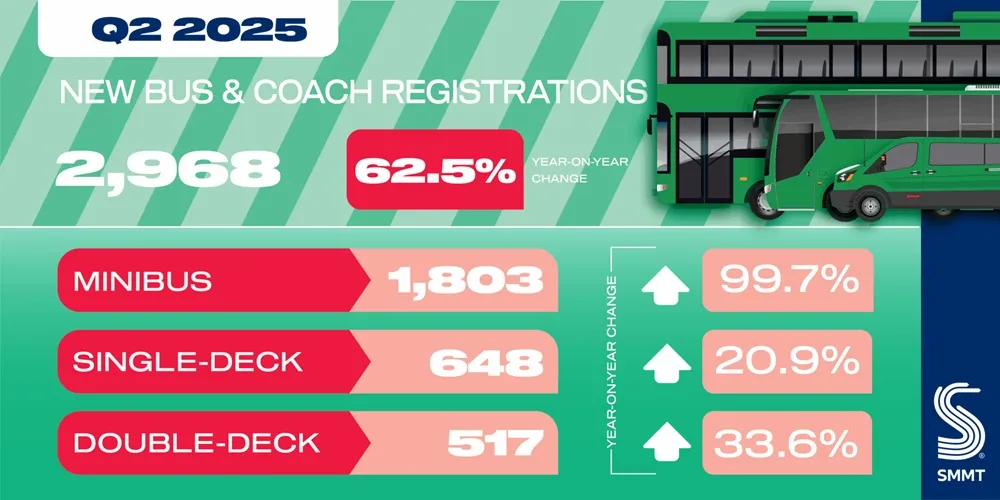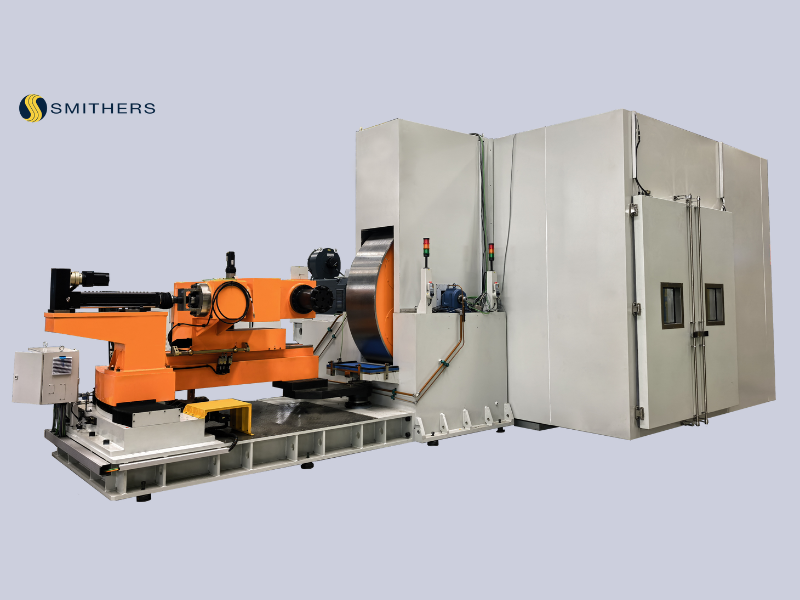According to the SMMT, UK bus, coach, and minibus deliveries jumped 62.5% in Q2 2025 to 2,968 units. Zero-emission buses rose 45.3%, accounting for one in five new vehicles, as minibus demand nearly doubled.
SMMT: Growth Driven by Minibus Demand and Zero-Emission Uptake
New UK bus, coach and minibus registrations surged by almost two-thirds (62.5%) in Q2 with 2,968 registrations, according to the latest figures published today by the Society of Motor Manufacturers and Traders (SMMT). It represents the ninth consecutive quarter of growth as rising passenger levels give fleet operators confidence to invest.
According to SMMT, new minibus uptake doubled to 1,803 units, driving most of the volume growth. SMMT data also shows deliveries of single-decker buses and coaches grew 20.9% to 648 units, while demand for double-deckers rose 33.6% to 517 units.
Buses continue to play a vital role in delivering affordable and accessible mass mobility across the UK, with strong uptake across all nations in Q2. England saw a 52.7% rise to 2,377 units, accounting for eight in 10 (80.1%) UK registrations. Scotland experienced the most dramatic growth, up 378.1% to 502 units, partly supported by ScotZEB funding. Fleet renewal declined in Wales and Northern Ireland, down 56.9% and 18.8%, though these markets are volatile due to last year’s growth and small volumes of 50 and 39 registrations, respectively.
Zero-Emission Bus Uptake Accelerates
The sector is also playing an active role in decarbonising road transport and improving local air quality, with zero emission uptake rising by 45.3% in Q2 compared with the same period last year, with 616 registrations. In the first half of 2025, some 1,355 zero-emission buses have joined UK roads – an 81.6% increase on the same period last year.
Britain’s success in decarbonising the bus market is the result of huge industry investment to deliver new products – with more than 20 zero emission models currently available – as well as substantial government support for fleet renewal via Zero Emission Bus Regional Area funding. Larger operators can invest more easily than smaller and rural fleets, which encounter unique challenges such as lower ridership and longer routes. The government and industry must develop a long-term strategy to support their transition, including a national infrastructure plan at depots, shared hubs, and en route locations, actively including every community.
“Britain’s new bus, coach and minibus market continues to gain momentum with another quarter of growth, making it nine months in a row – a welcome period of market recovery after 2020’s nadir.”
“The growth has been underpinned by rising passenger levels and zero emission uptake as bus decarbonisation continues to be a real success story, cutting emissions, improving air quality and increasing access to affordable, mass green mobility across the country,” commented Mike Hawes, SMMT Chief Executive.








